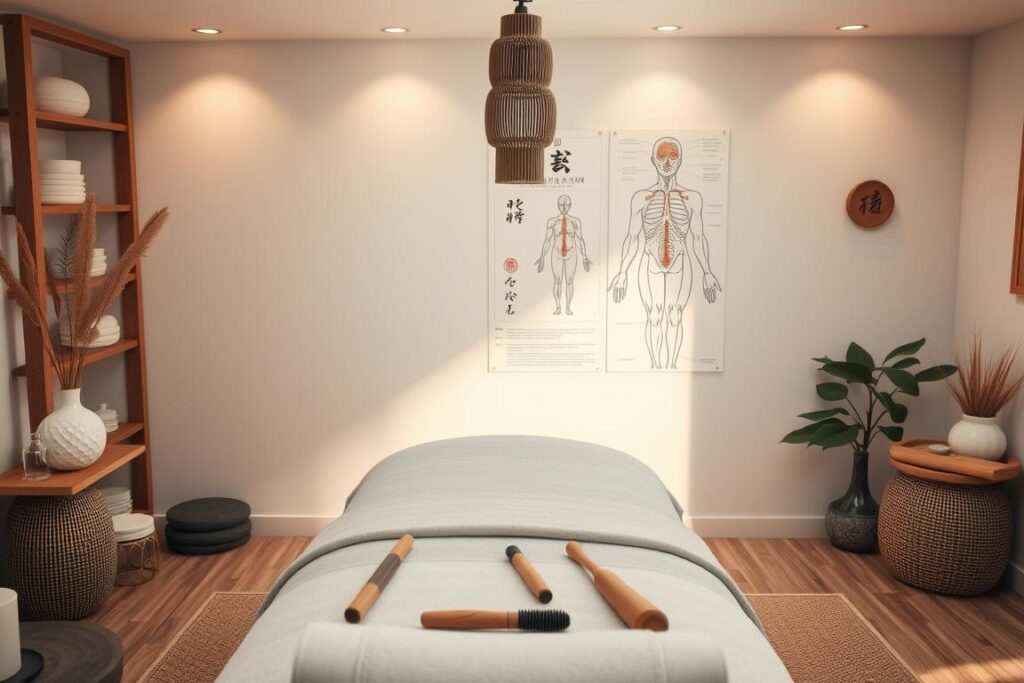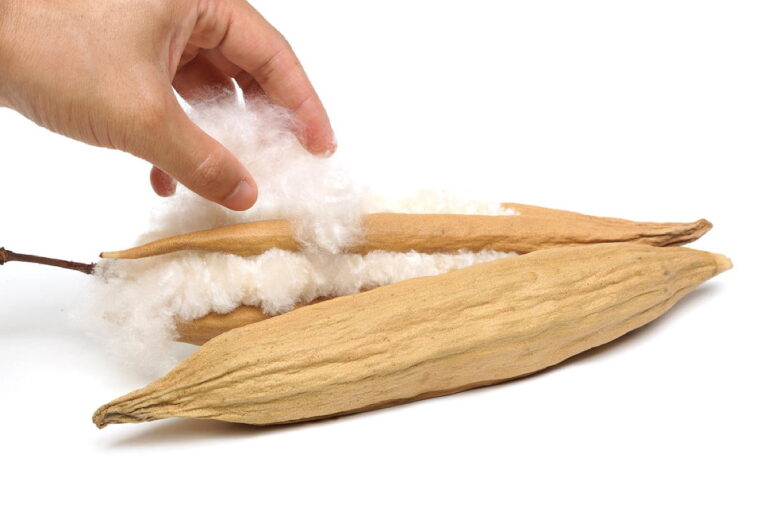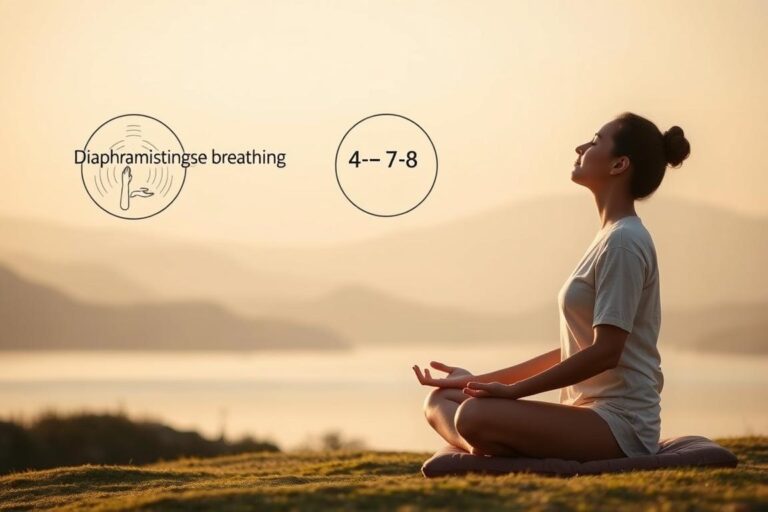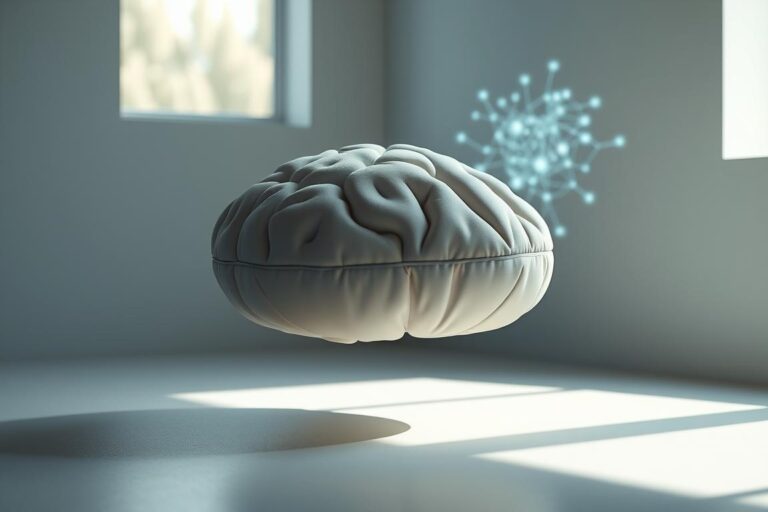Acupressure for back pain: how to relieve tension
Did you know that back pain is the second most common single diagnosis for sick leave in Germany? Despite a wide range of treatment options, many people are looking for natural and medication-free alternatives to alleviate their pain. This is exactly where acupressure comes into play, a traditional Chinese healing method that uses manual pressure on specific body points to relieve pain and promote general well-being. This form of therapy is becoming increasingly popular, especially among those who want natural back pain relief.
Back pain is not just an individual problem; it has an immense social and economic impact. Acupressure for back pain could be an effective method to alleviate this discomfort and improve quality of life. It is a practice that is often applied by patients themselves and therefore implies a high degree of personal responsibility and self-treatment.
Important findings
- Acupressure can be a natural and medication-free method of relieving back pain.
- The application of pressure to acupressure points should last between 60 and 120 seconds.
- Certain points such as Gb 20, Ga 21 and Bl 60 are particularly effective for back pain.
- Regular self-treatment with acupressure involves a high degree of personal responsibility.
- Contraindications include acute organ or muscle damage and severe cardiovascular problems.
What is acupressure?
Acupressure is a form of manual therapy that treats complaints by applying pressure to certain points on the body. This method originates from traditional Chinese medicine and focuses on the meridians, the energy pathways that run through the body. There are a total of 361 sensitive acupressure points on the body.
Acupressure techniques aim to release blockages and stimulate the flow of energy, which is essential for health and well-being. The pressure point massage aims to bring the body into balance, which can lead to relief from complaints such as back pain, nausea, pain, tension and even mild to moderate depression.
Acupressure techniques can last from a few seconds to a minute, whereby the pressure is applied selectively. The effect can be immediate or take a few minutes. Certain acupressure points such as Bl 60 and Bl 64 have been shown to be particularly effective for chronic lower back pain. It is estimated that up to 70% of users can achieve a pain-relieving effect through this pressure point massage.
Acupressure is traditionally practiced in China as a common self-therapy and has gained popularity worldwide. In Germany, back pain is the most common cause of visits to the doctor, with poor posture and lack of exercise playing a major role. With regular use, acupressure techniques can offer a significant improvement of up to 60% within a few sessions.
| Aspect | Description |
|---|---|
| Number of acupressure points | 361 |
| Duration of application | A few seconds to a minute |
| Pain-relieving effect | Up to 70% of users |
| Improvement after sessions | 60% after two to three sessions |
How does acupressure work for back pain?
In acupressure, it is assumed that back pain can be caused by disturbances in the flow of energy along the meridians. Specific pressure points that are connected to the back are stimulated in a targeted manner to release the so-called Qi congestion and relieve the pain. This relaxes the back and promotes the flow of Qi energy.
Acupressure can be used for pain, nausea, tension, arthritis and back pain. There are a total of around 361 sensitive acupressure points in the human body. The application can last from a few seconds to a minute, with the pressure being slowly increased. In acupressure, it is believed that activating these points releases endorphins, which are perceived by the spinal cord and brain as less intense pain impulses.
Acupressure has a history of over 3000 years and is a practice within Traditional Chinese Medicine (TCM). The application shows evidence of positive effects in cases of severe nervousness, stress, sleep problems and other illnesses. There are risks such as local pain, slight muscle soreness or bruising, particularly with excessive pressure. Patients taking blood thinners should be particularly careful and pregnant women should seek medical advice before use.
Over 80% of X-ray or MRI findings show no corresponding findings to the patient’s back pain, making acupressure a practical alternative. Back pain affects the quality of life of many people, often leading to professional treatments such as massage therapy or physiotherapy. The effectiveness of acupressure for back pain in the lumbar spine (LS) has led to a noticeable improvement in many patients in the first treatment. For back pain in the cervical spine (cervical spine), pressure points up to two finger widths from the center can be found to relieve pain.
| Areas of application | Treated complaints | Affected meridians |
|---|---|---|
| Lower back | Lower back pain, stress, sleep problems | Liver meridian (LV3) |
| Upper back and neck | Neck pain, shoulder pain | Gallbladder meridian (Gb20) |
| Middle back | Hip pain | Bladder meridian (B49) |
| Shoulder area | Shoulder pain, neck stiffness | Bladder meridian (SI 15) |
Effective acupressure points for back pain
Targeted acupressure points along the meridians can work wonders for back pain. Traditional Far Eastern medicine has been using this successfully for thousands of years, and modern studies also support its effectiveness.
Near point Gb 20
Gb 20, also known as Fengchi, is located at the back of the head, at the base of the skull next to the large tendon. This point not only helps with back pain, but can also relieve tension in the neck and alleviate headaches. A gentle massage of this point can work wonders.
Near point Ga 21
The Ga 21 point, or Jian Jing, is located on the back of the shoulders, between the neck and the shoulder. It is particularly helpful for tension and pain in the upper back. Stimulating this acupressure point can relax the muscles and improve blood circulation in the shoulder and neck area.
Far point Bl 60
The acupressure point Bl 60, also known as Kunlun, is located on the foot, approximately halfway between the outer ankle and the Achilles tendon. Stimulation of this point can relieve pain along the entire spine. Regular use of these acupressure points on the back can provide significant relief and improve mobility.
Self-treatment of back pain with acupressure
Acupressure offers a safe and simple way to treat back problems yourself. By pressing specific points on the body, you can relieve your pain on your own without having to rely on medical help. Studies, such as the randomized controlled trial in Spain from 2006 to 2007, show positive effects in reducing back pain.
A total of 275 people took part in this study, divided into four groups. The analysis took into account the results of two groups of 138 people, with the average age of the participants being between 41 and 44 years. The proportion of women was 57-64%, and the acute back pain did not last longer than two weeks before the start of the study. The mean pain score at baseline was 70-72 on a 100-point scale.
A significant improvement in self-treatment of back problems was defined by a change of four or more points on the Roland and Morris Disability Questionnaire (RMDQ). The treatment duration was two weeks and participants were followed up for one year after treatment. The results showed an improvement in the majority of participants in the first few weeks, both with acupuncture and sham acupuncture.
Another study at the Charité showed that 37% of women reported a 50% reduction in pain from menstrual cramps after three months using acupressure. After six months, 58% of the participants achieved a 50% reduction in pain, and two thirds of the women continued to use acupressure for self-treatment after the study. These studies illustrate the potential of acupressure for self-treatment of back problems.
| Parameters | Details |
|---|---|
| Participants | 275 |
| Average age | 41-44 years |
| Proportion of women | 57-64% |
| Improvement | 4 points on the RMDQ |
| Follow-up | One year |
Aids for acupressure
A range of acupressure aids can be used for acupressure at home. They enable targeted and effective treatment to relieve pain and release tension.
Acupressure mat
Acupressure mats such as the Shakti Mat stimulate the pressure points and promote blood circulation. It can relieve pain and reduce tension within 20 minutes. The mats are made from 100% GOTS-certified organic cotton and recycled foam. Thanks to the clip disk technology, the mats adapt to the body and increase the effectiveness of acupressure. The spikes of the Shakti Mat are 95% sharper and more durable than most imitation products that use inferior plastic.
Massage knob
A massage knob allows targeted and intensive treatment of specific acupressure points. It is easy to use and can even be applied to hard-to-reach areas such as the back or shoulders. Regular use can contribute to significant relief from chronic pain and improve quality of life.
Acupressure pen
You can precisely stimulate the pressure points with an acupressure pen. It is a particularly helpful tool for headaches and migraines. Using an acupressure pen can help to relax and reduce stress, which in turn supports the overall health benefits of acupressure.
| Feature | Shakti Mat | Massage knob | Acupressure pen |
|---|---|---|---|
| Material | 100% organic cotton, recycled foam | Wood or plastic | Stainless steel or plastic |
| Effectiveness | Clip disk technology | Targeted pressure point stimulation | Precise stimulation |
| Application | 20 minutes a day | Individual | Individual |
| Additional advantages | Promotes blood circulation, stress reduction | Easy to handle | Migraine and headache reduction |
Experience and studies on acupressure
Studies on acupressure have shown that this technique has been an integral part of Traditional Chinese Medicine (TCM) for over 3,000 years. The human body has at least 100 different acupressure points and 12 meridians along which treatment can take place. Recent studies, such as those by Susan Lynn Murphy, prove the effectiveness of acupressure in the treatment of chronic back pain.

A small study at the University of Duisburg-Essen, for example, found that 96% of 82 test subjects suffering from chronic back and neck pain felt a significant reduction in pain after 14 days of regular use of acupressure mats. In addition, 81% of the participants reported an improvement in the quality of their sleep.
Entry-level models of acupressure mats contain between 6,000 and 10,000 plastic needles, with experienced users often opting for mats with just 4,000 spikes to stimulate more precise pressure points. The effect of the acupressure mats improves with the number of spikes, as the pressure is distributed more evenly.
The studies acupressure underpin the effectiveness acupressure also for other conditions such as nausea or headaches. According to Dr. Christian Schmincke, acupressure is a common method for relieving back pain and tension.
One conclusion of the scientific studies is that acupressure is a suitable alternative for patients who are sensitive to needles, such as children. In contrast to acupuncture, acupressure is performed without needles and can therefore be tolerated by a wider group of patients.
| Study | Participants | Results |
|---|---|---|
| University of Duisburg-Essen | 82 | 96% reported less pain after 14 days |
| Susan Lynn Murphy | 50 | Significant reduction in chronic back pain |
However, the use of acupressure mats can also involve risks. People with epilepsy should avoid acupressure mats, as painful stimuli can lead to seizures. Patients with blood clotting disorders should also be careful due to the possibility of micro-bleeding. Pregnant women should avoid using it as it can trigger premature labor. However, the studies on acupressure show a positive overall balance and put the effectiveness of acupressure in a good light.
Areas of application of acupressure beyond back pain
In addition to back pain, acupressure can also be helpful for a variety of other complaints, including nausea, digestive disorders, respiratory disorders as well as menstrual cramps and high blood pressure. The technique offers a versatile, cost-effective and gentle treatment method.
Nausea and indigestion
Acupressure has positive effects on well-being in cases of nausea and indigestion. Specific points such as P6 (Neiguan) on the wrist can alleviate symptoms through gentle pressure or massage. This method is particularly popular with pregnant women, as acupressure is a natural alternative with no side effects.
Respiratory diseases
Certain acupressure points such as Lu1 (Zhongfu) on the chest can be helpful for respiratory diseases such as asthma or chronic bronchitis. Regular use can open the airways, loosen mucus and make breathing easier. Acupressure offers a supportive form of therapy here, which can be particularly helpful in the cold months.
Menstrual cramps and high blood pressure
Acupressure applications also include the relief of menstrual cramps and high blood pressure. Points such as Sp6 (Sanyinjiao) and Lv3 (Taichong) are particularly effective in reducing cramps and lowering blood pressure. Many women report noticeable relief and an improvement in general well-being through regular acupressure sessions.
Acupressure vs. acupuncture: important differences
Although acupressure and acupuncture are both based on the meridians of Traditional Chinese Medicine (TCM), there are significant differences between acupressure and acupuncture. Acupressure involves applying pressure to specific points, while acupuncture uses needles.
Another difference between acupressure and acupuncture is that acupressure can be carried out safely by the patient. Acupuncture, on the other hand, is a more complex treatment that must always be carried out by specialists. There are around 700 contact points under the surface of the skin, of which around 400 are defined as acupuncture points. Acupuncture treatment typically takes 20 to 30 minutes.
Acupressure and acupuncture have many possible applications and studies prove their effectiveness. Acupuncture can reduce pain symptoms, especially in the case of chronic complaints. A randomized study by Techniker Krankenkasse showed that three out of four patients with headaches or lumbar syndrome experienced significant improvements after acupuncture treatment, which continued six months later.
Acupressure is based on the same theory as acupuncture and uses the same pressure points, but without needles. This makes it safer and more accessible for daily use. Acupressure can relieve nausea, tension headaches, migraines and colds. The recommended duration of treatment varies according to age group and health condition, from babies to adults.
The best tips for using acupressure
For effective results, acupressure should be performed regularly and with the correct technique. The following acupressure tips provide you with valuable information on optimal use and technique.
Regularity and consistency
Initial use of the acupressure mat should start at 5-10 minutes per day. It is recommended to gradually increase the duration to 20-30 minutes per application. Short sessions with vibration, such as those offered by the OrthoMat, should last 10-15 minutes. Daily use is recommended for acute complaints, while 3-4 times a week is sufficient for general well-being.
A common misconception is that longer sessions are immediately more effective, but it is essential to gradually increase the applications. Individual body sensitivity should always be taken into account in order to avoid overloading.
Correct technology
Gentle but firm pressure and activation of the key points are essential for successful treatment. A slight stinging sensation while using the acupressure mat is normal, but should be reduced if discomfort occurs. A cloth can help to adjust the intensity of the pressure and prevent skin irritation.
Make sure that the acupressure mat is positioned correctly to ensure optimal stimulation of the back area. A Pythagoras cushion under the knees can be particularly helpful, especially for nerve pain or sciatica, to distribute the pressure and improve the effectiveness of the application. Other acupressure tips include the application of specific points, such as Stomach 38 for shoulder pain or Large Intestine 10 to regulate the gastrointestinal tract.
Benefits of acupressure for back pain
Acupressure offers a variety of benefits, especially in the area of back pain. One of the biggest benefits is the reduction of pain and the promotion of relaxation. Due to the non-invasive methodology of this technique, acupressure is easy to learn and apply independently. This allows you to work directly on your own health and strengthen your back.
International studies have proven the effectiveness of acupressure in the treatment of back pain. The World Health Organization (WHO) recommends acupuncture for over 40 different conditions, including back pain. Acupressure is particularly effective in treating pain, tension and arthritis, which strengthen back health
Significant pain relief usually occurs after 5 to 6 sessions, with a success rate of over 80 percent for chronic pain in the neck and lumbar region. According to Chinese medicine, chi flows in 12 main meridians, which can be influenced by more than 360 acupuncture points. These points are often located in hollows between bones, muscles and tendons and indicate a slight pain when they are hit.
There are a total of 361 sensitive points on the energy pathways in the body, which expands the treatment options. In China, self-therapy using acupressure is already commonplace and has positive effects on severe nervousness, stress, sleep problems, diarrhea, constipation and loss of appetite.
Statutory health insurance companies in Germany cover the costs of acupuncture treatments for chronic low back pain. This speaks for the recognized effectiveness of this technique. A combination of acupuncture and acupressure is considered particularly useful for chronic complaints in order to strengthen health and the back.
| Advantages | Details |
|---|---|
| Reduction of pain | Pain relief often after just 5 to 6 sessions |
| Promotion of relaxation | Increased relaxation and stress reduction |
| Non-invasive method | No surgical intervention required |
| Easy to use | Can be easily learned and applied by yourself |
| Recognition by WHO | WHO recommends acupressure for over 40 conditions |
In summary, acupressure offers an effective, safe and accessible method of relieving back pain and promoting your overall health so that your back becomes stronger.
Conclusion
Acupressure is an effective and natural method of treating back pain and improving general well-being. The benefits of acupressure lie not only in pain reduction, but also in relaxation and improved sleep. A small study by the Community Wholistic Health Center showed that 98% of participants reported less pain after two weeks of regular use, 96% felt more relaxed, 94% had more restful sleep and 81% felt generally better.
The use of aids such as acupressure mats can further enhance this effect. Acupressure mats are usually around 70 cm by 40 cm in size and are equipped with over 6,000 hard plastic nubs. In the study conducted by the University of Essen-Duisburg with 91 participants, it was found that the test subjects’ pain clearly subsided. Users stated that regular use of 10-20 minutes a day led to the best results.
However, acupressure is not suitable for everyone. Sensitive people, such as pregnant women or people with heart problems, epilepsy and inflammatory skin diseases, should consult a doctor beforehand. Despite some reports of skin irritation, many people found the pressure to be beneficial after a familiarization phase. Scientific evidence that fully supports the effectiveness of the acupressure mat is still limited, but initial positive trends and user reports speak in favor of the method.
In summary, acupressure is a promising complement to conventional medicine. The benefits of acupressure include not only pain relief, but also an improved quality of life through improved relaxation and sleep quality. Long-term and sustainable results can be achieved through regular use.
FAQ
Q: What is acupressure?
Q: How does acupressure work for back pain?
Q: Which acupressure points are effective for back pain?
Q: Can I use acupressure myself to treat back pain?
Q: What aids are available for acupressure?
Q: Are there any studies on the effectiveness of acupressure?
Q: What else can acupressure be used for apart from back pain?
Q: What are the differences between acupressure and acupuncture?
Q: What are the best tips for using acupressure?
Q: What are the benefits of acupressure for back pain?
References
- Acupressure: Which pressure point helps against which complaints – https://www.beobachter.ch/gesundheit/medizin-krankheit/gut-gedruckt-ist-halb-geheilt-286324?srsltid=AfmBOorWhWN1oLwAaFSNqdJZ0uiGTF9ggJ2Niag2V097FPyovMreWUNK
- Acupressure for back pain – what you can do yourself – https://www.naturmed.de/blog/allgemein/akupressur-bei-rueckenschmerzen/
- 7 pressure points that relieve back pain | ELLE – https://www.elle.de/akupressur-druckpunkte-gegen-rueckenschmerzen
- Acupressure – https://www.deine-gesundheitswelt.de/balance-ernaehrung/akupressur
- Acupressure: Relieve pain with these acupressure points | BR.de – https://www.br.de/radio/bayern1/akupressur-100.html




